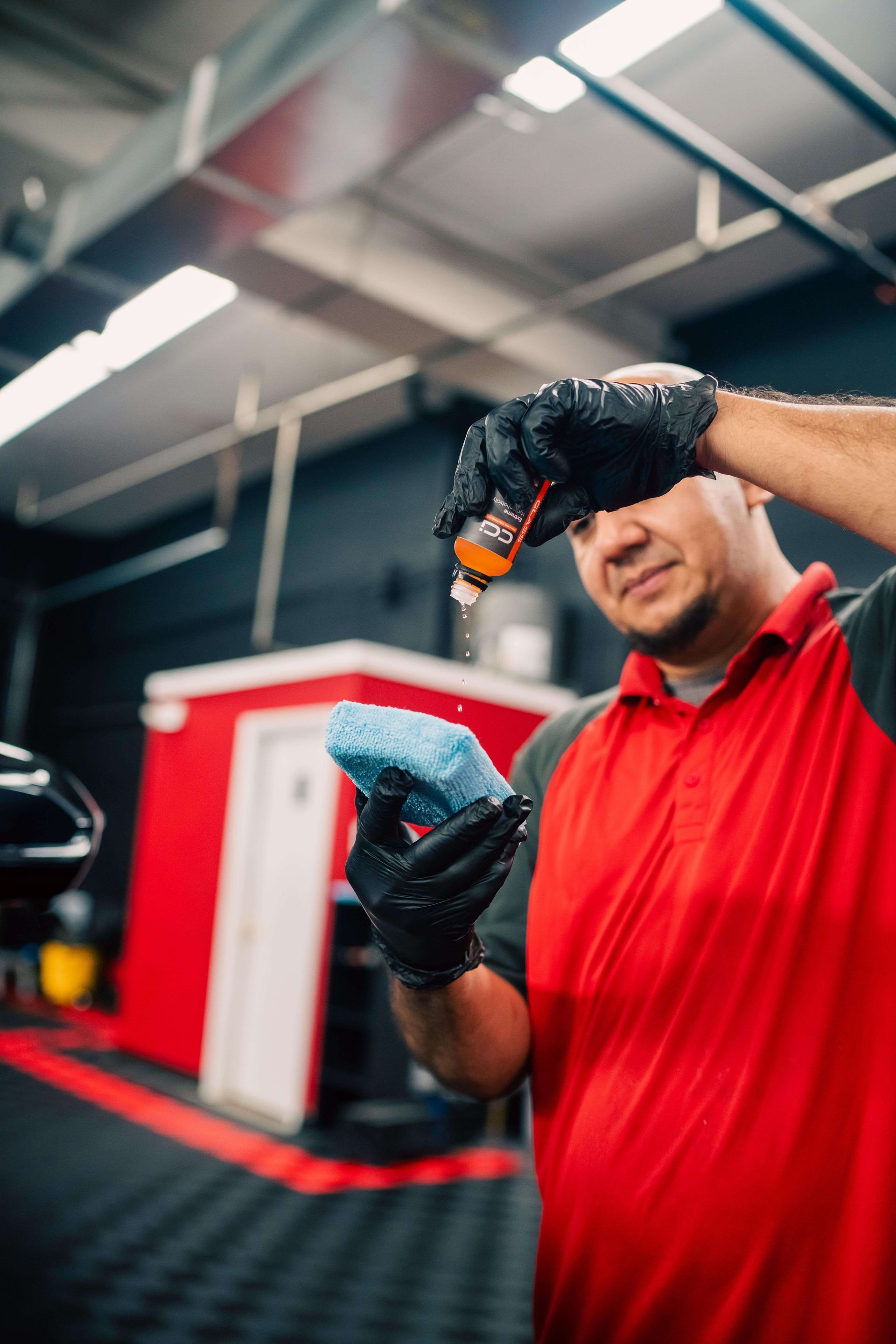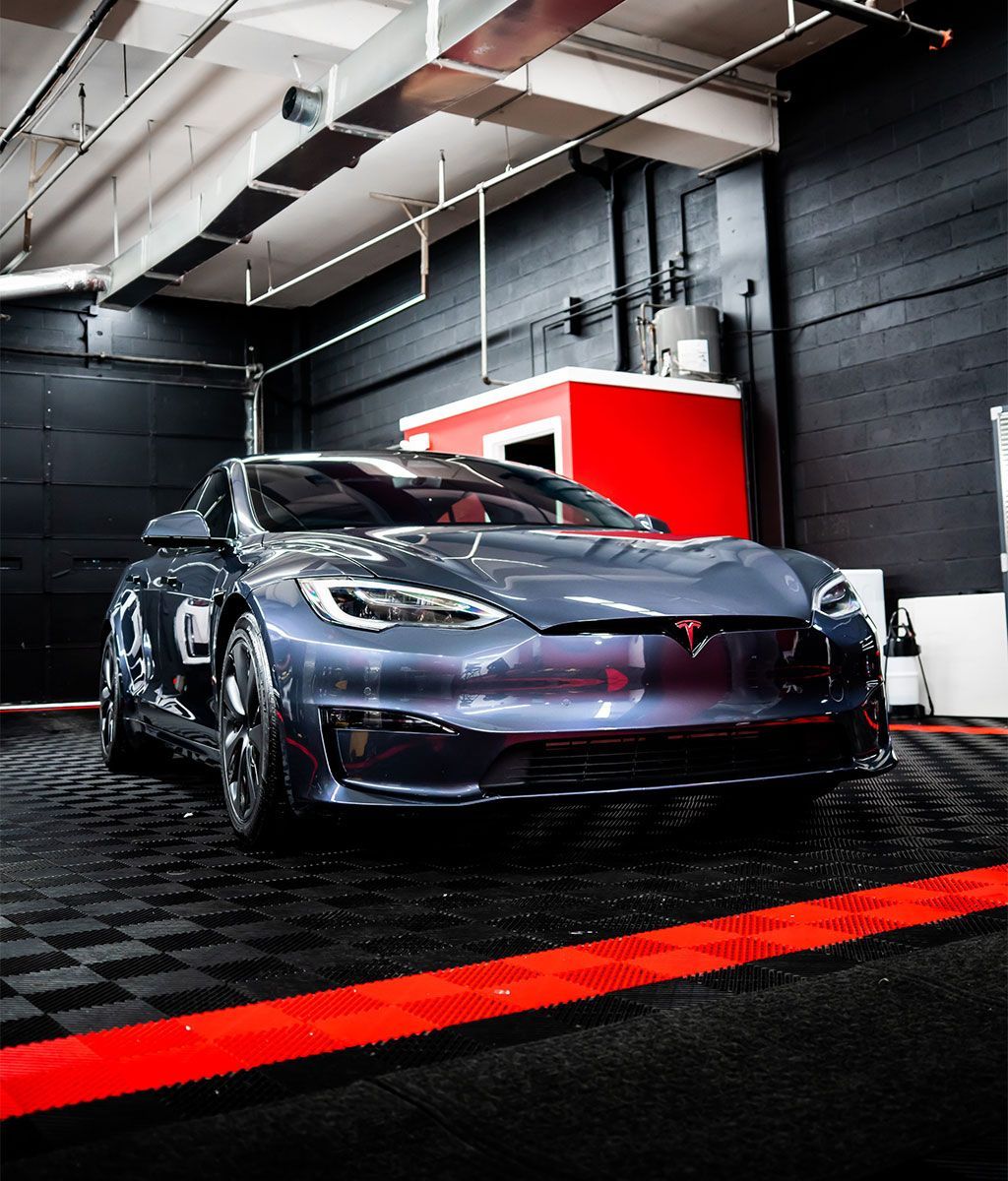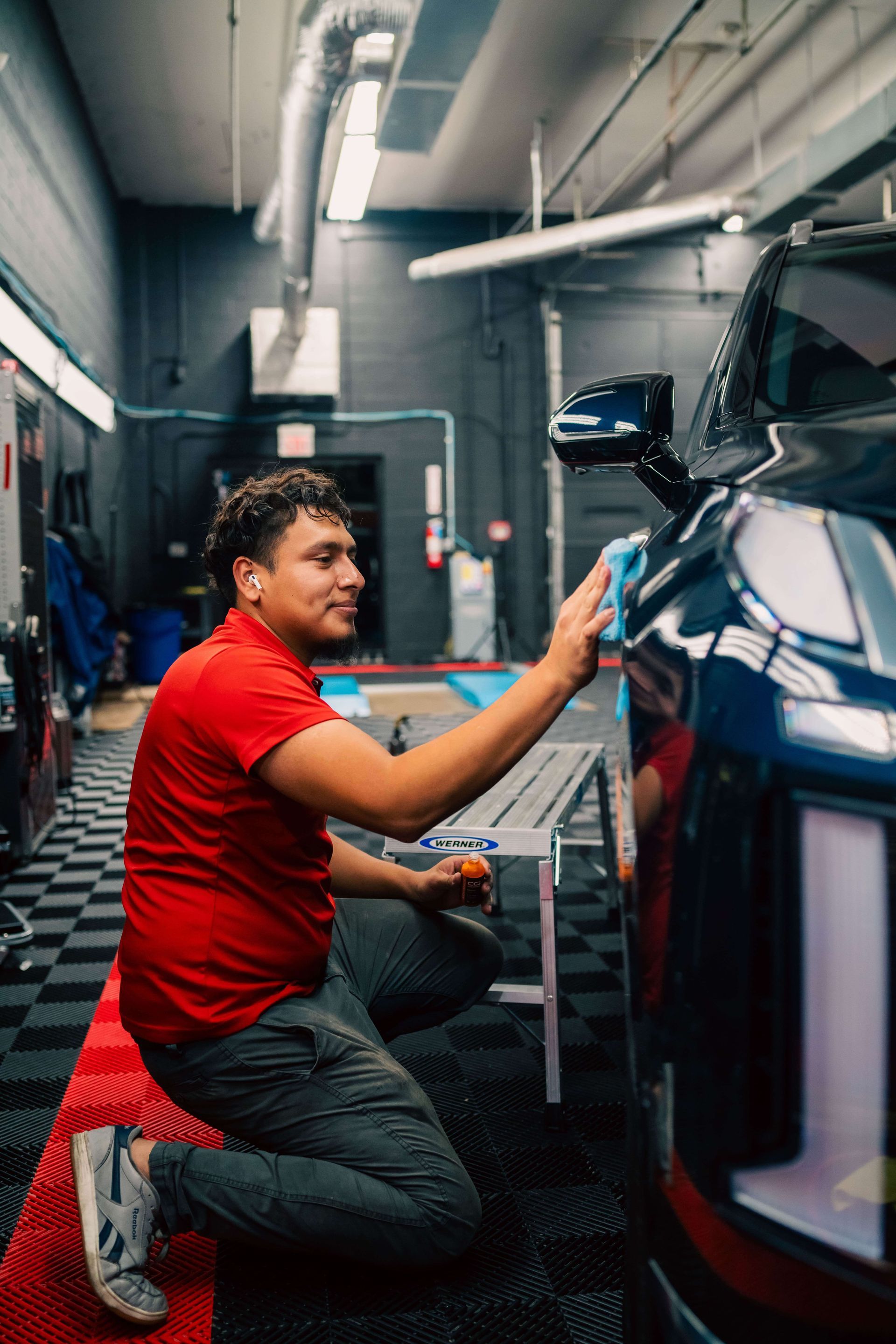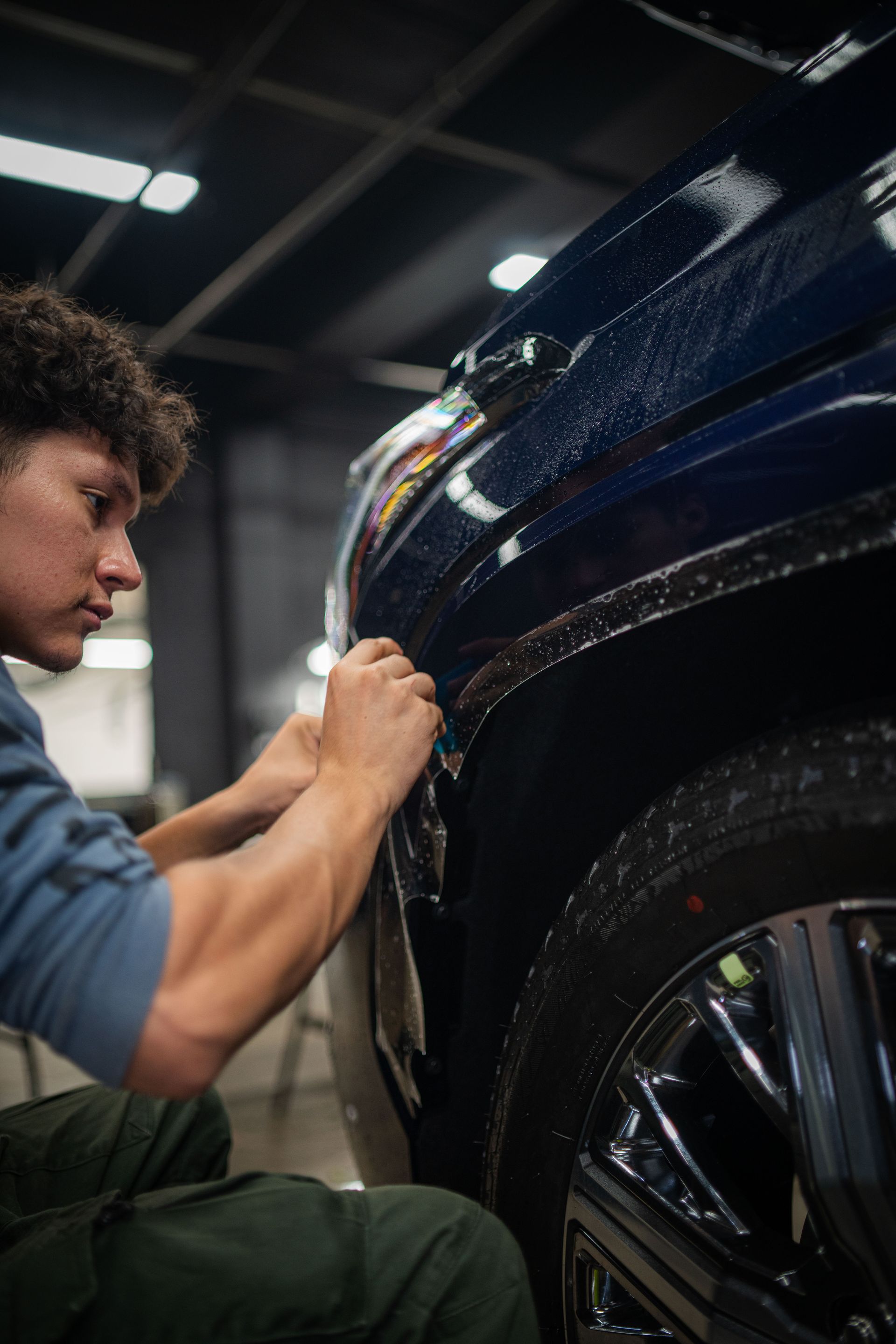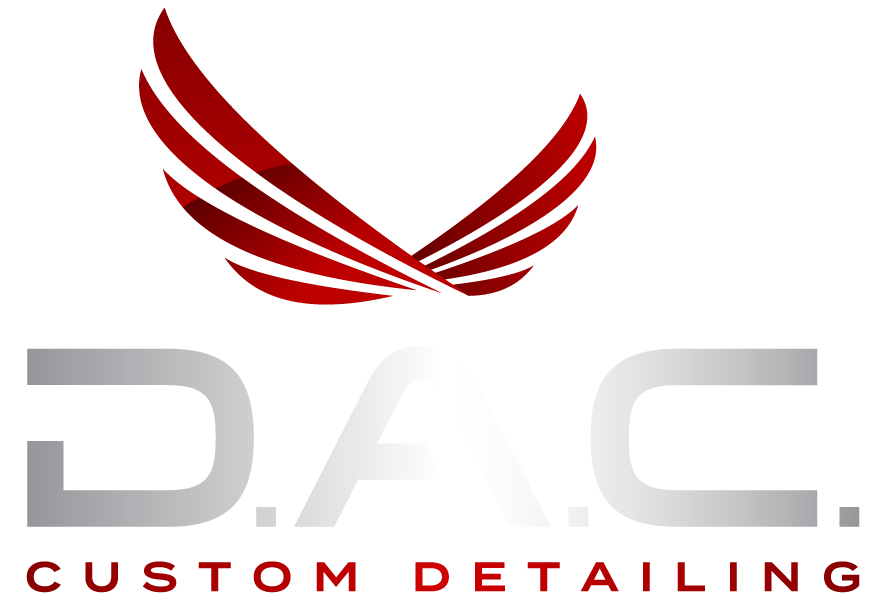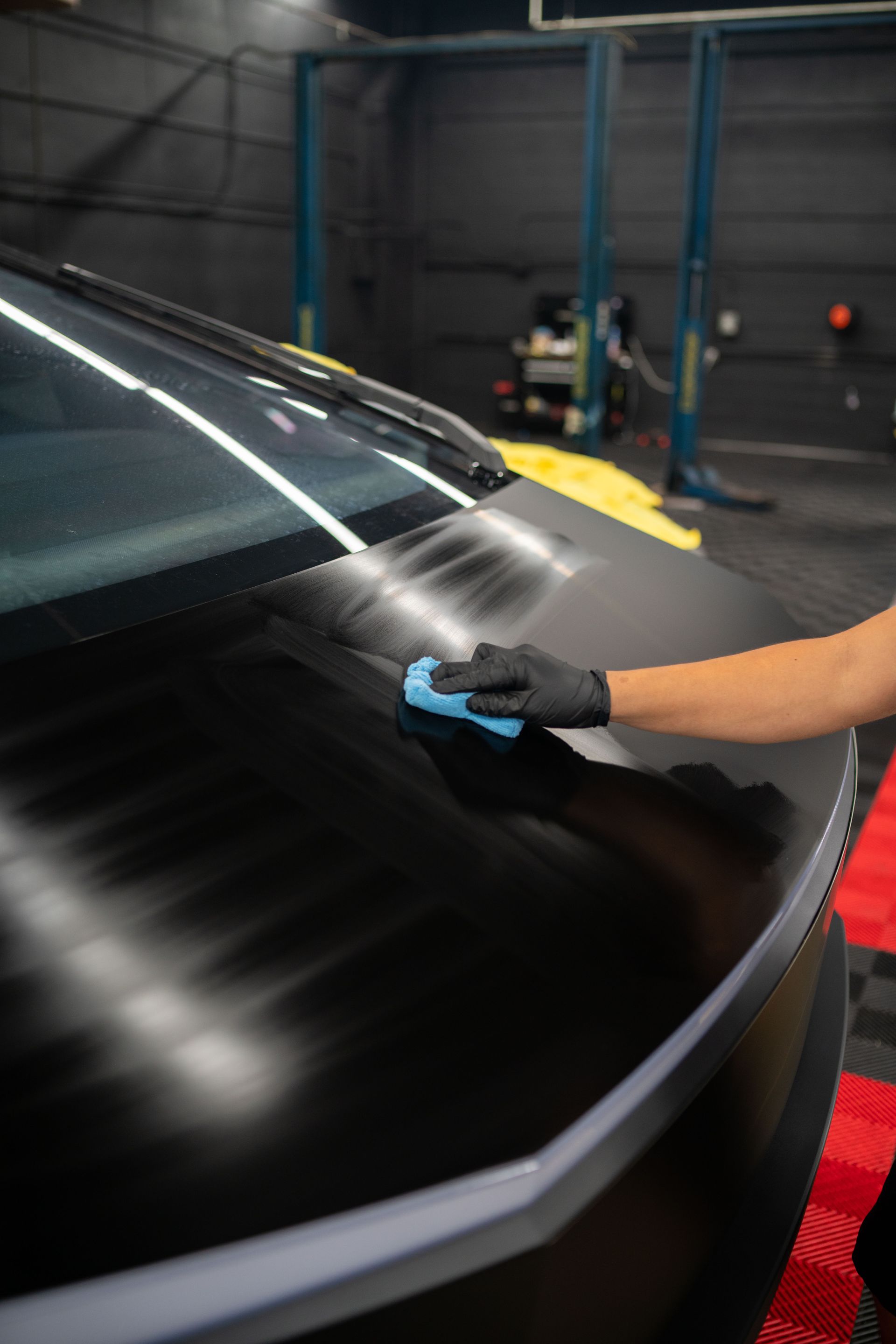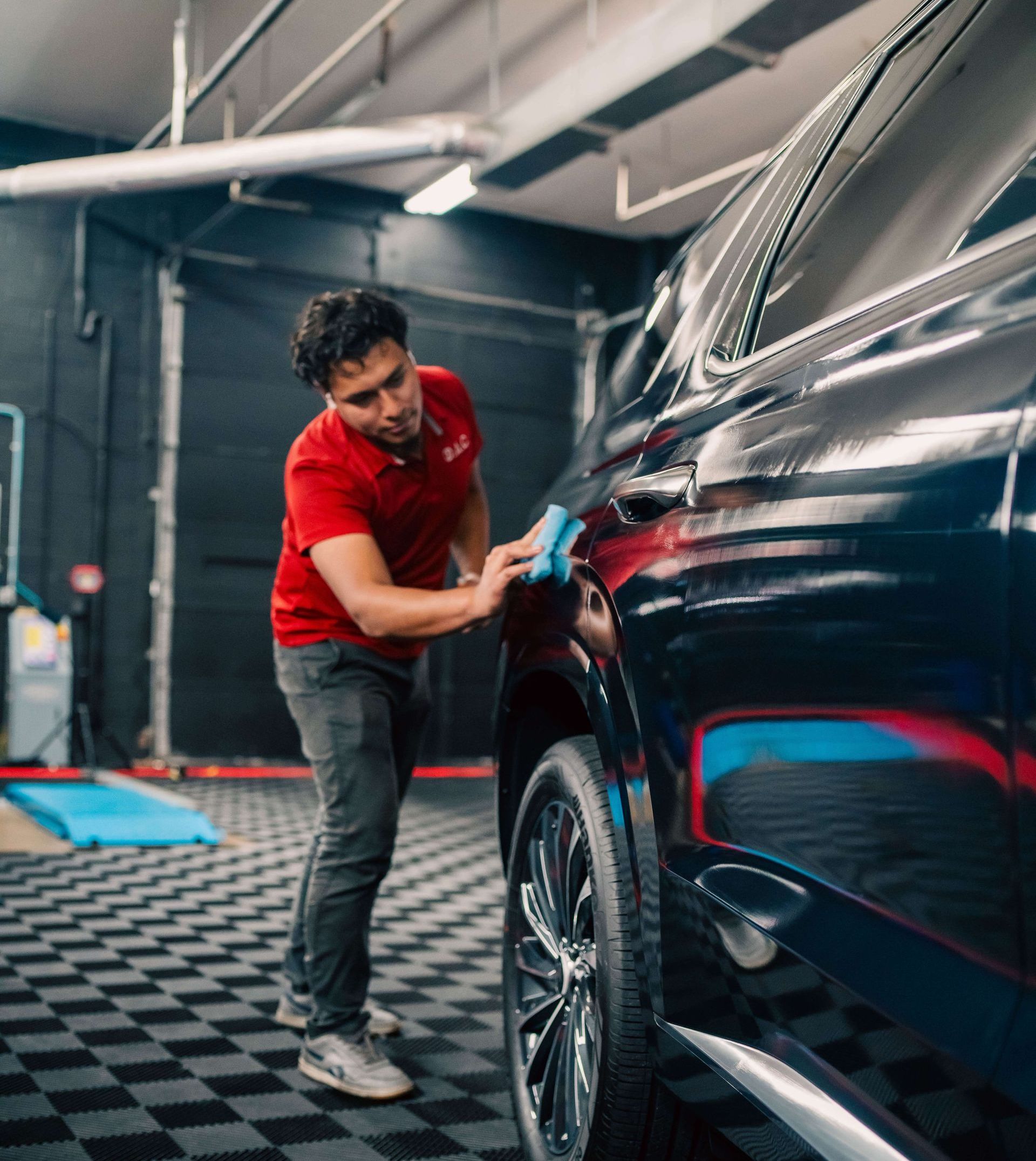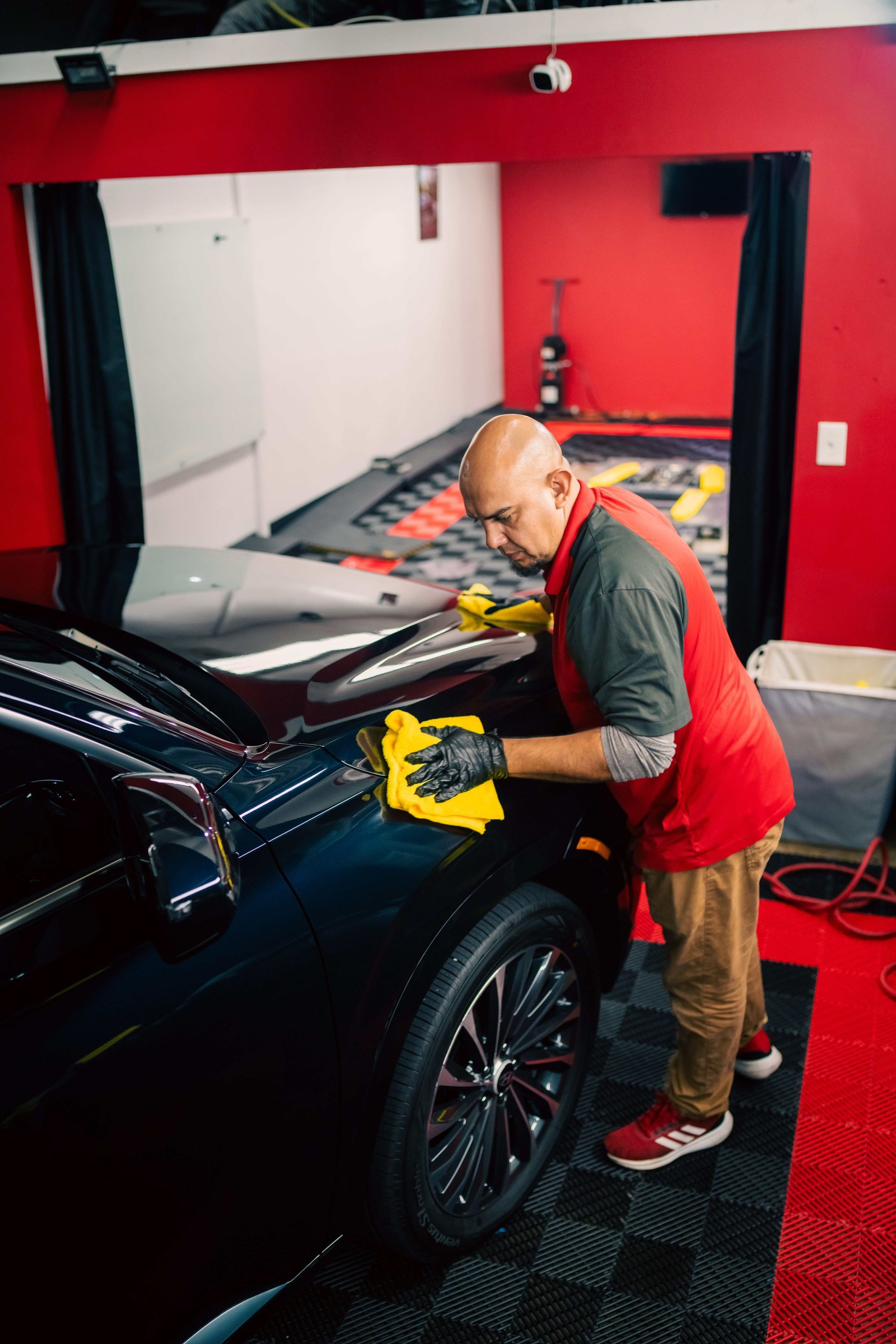REVIVE, PROTECT, MAINTAIN

If you thought a trip to the paint shop for a fresh coat of paint and a quick paint correction job was an easy way to spruce up your ride, think again! DIY paint correction can be a total nightmare if not done correctly, and there are plenty of pitfalls that you might not know about until it’s too late. Let's take a look at the dangers of DIY paint correction.
What is DIY Paint Correction?
DIY paint correction is the process of manually removing physical imperfections from a vehicle's paint using a variety of tools, such as buffers and polishes. The goal of this form of automotive detailing is to restore the car's original condition with minimal effort. As this method has become more accessible and affordable over the past few years, car owners have begun to embrace it as a viable alternative to professional services.
The proponents of DIY paint correction argue that it is an efficient way to achieve high-quality results without spending a significant amount of money or time. Additionally, using these tools can provide a sense of satisfaction, as users can be personally involved in the maintenance of their vehicle. On the other hand, those who are against this idea suggest that there is an element of danger involved due to the possible damage that can be caused if done incorrectly. Indeed, between burn-through from too aggressive tools and inflicting additional scratches or swirls while using improper technique, it is easy to see why caution should be taken when going down this route.
At the end of the day, DIY paint correction can be a rewarding experience, provided that one has the expertise and caution necessary to properly handle delicate surfaces. That being said, one should always consider the potential risks before taking on such a project and ensure that they are proficient in both the theoretical and practical aspects related to the craft, or play it safe by consulting with professionals. With this in mind, let us move on to examining the process for DIY paint correction.
The Process for DIY Correction
When it comes to DIY paint correction, the process itself can seem confusing and overwhelming for the newcomer. The basics of this process involve sanding down a vehicle’s clear coat so that imperfections can be eliminated, then using a polisher to remove swirl marks and other scratches, and finishing with a wax or sealant to protect the car’s finish.
Many advocates for DIY correction will say that the process is relatively straightforward and can save both time and money during repair. These supporters would likely point out that while the job may take hours to complete, it usually prevents having to pay exorbitantly high garage prices. Furthermore, they might also acknowledge that, due to the convenience of tools such as electric polishers available for purchase today, most car owners can readily undertake the correction themselves.
On the other hand, some would say that although many tutorials make paint correction seem like an easy do-it-yourself job, there is inherent risk in attempting this task without the expertise that professional detailers have developed over years of experience. These skeptics could cite examples such as an overly aggressive approach leading to deep scratches or swirling, which might be impossible for homeowner-level machines and compounds to fix. And in addition to worsened surface conditions, there could even be potential long-term damage to valuable finishings if one is not very careful.
As such, it is important for everyone to carefully consider both sides of this debate before undertaking any DIY paint correction projects. There are numerous techniques and products out there tailored towards specific surfaces; too much of an incorrect substance under too much pressure could end up causing damage that may not be easily undone. Therefore, before deciding whether or not to attempt a do-it-yourself job on their vehicle’s exterior, each individual should weigh how much the potential "savings" of using lower-quality materials or less experienced operators might end up costing them in time, energy, and even money in order to restore their vehicle back into satisfactory condition.
Oftentimes, this assessment turns out favoring enlisting professional help instead; whether it will in your case is best evaluated by conducting adequate research into both options prior to proceeding with any particular approach. And though DIY paint correction may not always be a wise decision depending on one’s experience level with detailing vehicles, understanding exactly what goes into this type of activity is still essential knowledge for any conscientious automotive enthusiast looking to care for their vehicles in an effective manner going forward. Armed with this knowledge comes a greater appreciation of just how dangerous it could be to attempt these tasks without proper qualifications or professional guidance, thus seamlessly transitioning into the next section about "The Dangers of DIY Correction".
The Dangers of DIY Correction
DIY paint correction, while potentially cost-effective and seemingly providing great results, comes with a host of dangers if done incorrectly. As previously discussed in the section on the process for DIY correction, the steps are numerous and require specialized tools to complete correctly. Therefore, not having the right tools or experience can lead to incorrect application and ultimately cause irreversible damage to a vehicle's paint. This could be anything from cracking and chipping to burning and scratching.
The risks associated with DIY corrections depend largely on your own skill level and knowledge of proper techniques. If you do not know how to apply specialized compounds like rubbing compounds or polishes at the correct levels of force or speed, you risk causing costly damage that may not be fixable. Additionally, improper buffing can produce tiny scratches on the paint’s surface that give it an uneven finish or dull appearance. If any of these mistakes occur, attempting to fix them likely leads to more harm when done by someone without knowledge of the correct techniques.
It is also important to note that each vehicle is unique, as all have different levels of damage and types of paint quality that require special attention. Poorly executed DIY corrections could also fail to solve the problem they were meant to address, which further causes harm and increases costs due to wasted materials on a problem that cannot be fixed by yourself.
Ultimately, DIY paint correction comes with a great deal of danger that must be kept in mind when making the decision. Although there are benefits to DIY correction due to cost savings compared to professional options, these should always be weighed against potential risks before attempting any correction. The next sections will explore this in more detail and provide guidance on how best to proceed in order to keep your vehicle safe from potential harm when opting for DIY correction over professional services.
The Risks Involved with DIY Correction
DIY paint correction involves risks that could potentially lead to costly repairs or the complete replacement of the car. Those attempting DIY correction are often unaware of what they are doing and lack the knowledge and skills to competently identify damage, use the correct products, and apply the right technique. Furthermore, even with good knowledge of how to correct scratches, many people lack the proper equipment needed to do this job professionally.
One major risk of DIY paint correction is using improper tools and techniques that could cause potential harm to the paint or even create further damage to it. Before any attempt at DIY repair should be made, one should be proficient in recognizing scratch types, selecting the best type of repair mechanism and technique for each type of scratch, and having a reliable set of tools for successful completion of repairs. Not properly addressing these issues can result in incomplete or inadequate corrections being made, which can lower the resale value of a vehicle while also increasing the cost of fixing it.
Another key risk involved with DIY paint correction is oversanding. It is possible for one to sand too deeply into a vehicle's paint if they lack experience and understanding of how to correctly identify a scratch's depth and type before attempting to buff out imperfections. Overeager drivers may often try to tackle very deep scratches with sandpaper or scotch brite pads they have access to instead of relying on specialized buffing compounds suitable for harsher abrasive materials. These types of aggressive actions can remove too much surface clearcoat, leading to duller, glossy finishes that require re-polishing or may even result in areas requiring full panel refinishes.
Ultimately, engaging in DIY paint correction comes with risks that increase damage to an already existing cosmetic issue that requires professional expertise and experience with proper tools that are able to efficiently fix it so as not to create further problems down the line. Doing so invariably may end up costing far more than intended depending on how the corrective process progresses, and while there are numerous instructional guides available online for those interested in taking such projects on themselves, caution should definitely be exercised when doing so as it can become quite daunting if one loses their way in the process. Though handled carefully, DIY maintenance can be beneficial, but transitioning over to attempted repairs has its own unique set of potential issues that must be fully understood ahead of time before proceeding, or else one may find themselves paying a hefty price later on down the road—literally. Now let us take a look at some of the most common damages seen after DIY paint correction, which reveal how truly risky such measures can be.
Damage to the Surface
Whenever the subject of DIY paint correction comes up, one of the key concerns raised is the potential for further damage to the surface. During a traditional polishing job, it only takes a few turns of an electric buffer too long or using the wrong technique to burn the paint. The novice should realize that there is a risk of causing more harm than good when trying to fix any imperfections.
On one hand, DIYers may argue that with a bit of practice and patience, they can learn to do the polishing either by hand or via machine correctly without damaging their vehicle’s painted surface. Evidence supporting this argument includes tutorials online as well as professional advice from experienced detailers and body shops. People who have taken these approaches claim that, if done right, they can actually reduce surface damage compared to what could occur with a poorly executed professional polishing job.
On the other hand, some would disagree and point out that those who are not professionally trained in auto-detailing may lack the knowledge and experience to properly polish a car’s paintwork without creating further imperfections or causing more damage. Professional car detailers often use specialized tools such as G-Mops, which make it easier to set consistent rotation speeds while polishing. They are also able to detect clear coat thickness, which also prevents over-buffing and reduces overall risk. With amateurs, there is limited experience and no guarantee that important steps will be followed accurately according to best practices. As a result, defects like swirl marks, ‘holograms," or even visible buffing marks can occur, which can ultimately leave lasting imperfections and significant damage in the paint’s protective layer long after project completion.
Despite claims on either side of the debate, anyone interested in paint correction should acknowledge that mistakes can happen and understand all possible outcomes before attempting it themselves. It is only then that hobbyists can confidently move into the next stage: assessing whether or not it is worth risking potential poor results for a potentially better outcome.
Risk of Poor Results
When it comes to DIY paint correction, the risk of poor results can be high. While it’s easy enough to pick up a buffer and start buffing away at your car, you may end up with devastatingly bad results if you lack the experience or proper handiwork to make the tools successful. A detailer who has been professionally trained and is using the correct products is much more likely to achieve a great outcome than an amateur DIYer.
The main danger of poor outcomes when it comes to DIY paint correction is that proper technique and tools are not used. Buffers, polishers, and even compounds come in a range of different grades, so if the wrong product is chosen or the wrong method is used, damage to the car’s paintwork can be beyond repair. Thus, it is essential that proper technique and products are used in order to achieve a quality result. Additionally, many DIY buffers are powerful machines that require special safety steps and knowledge of how to use them correctly; this knowledge often requires extensive training from a professional detailing shop or individual. In some cases, an expensive automotive detailing kit may be needed in order to complete paint correction safely.
Finally, using the wrong method of correcting paint faults runs the risk of creating additional problems, such as dull areas due to overbuffing or swirl marks caused by improper buffing techniques. To avoid these types of issues when attempting a DIY job, it’s essential to have a good understanding of how to use any specific tools before trying them out on your car—something that professional detailers already have and most amateur detailers do not possess.
In conclusion, inexperienced DIYers taking on paint correction may yield unintended results due to a lack of experience or knowledge pertaining to proper technique and products being used, leading to potential permanent deterioration or damage. From this point, we can further understand why professional detailers are better at delivering positive outcomes with their experience.
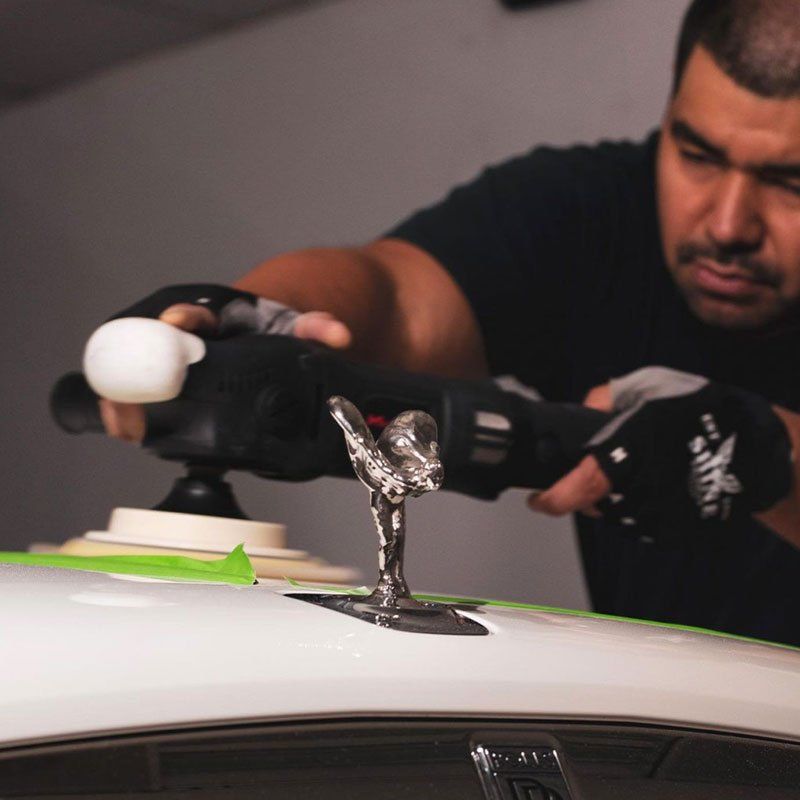
Why Professional Detailers Are Better at Paint Correction
When it comes to the risk of poor results from DIY paint correction, the argument can be made that professional detailers are better at such a task. This is because they have experience and know-how that the majority of do-it-yourselfers may not possess.
One of the key benefits of entrusting paint correction to a professional detailer is that they will be able to recognize more subtle nuances in each area needing correction as well as how to best treat each individual issue appropriately. Oftentimes, if too much product is used on certain areas, it can do more damage than good instead of creating a lasting shine. Professional detailers understand this and are trained to make sure their work looks fantastic not only while at their shop but a few weeks or months down the road as well.
Additionally,detailers use specialized tools for paint correction tasks. These tools often produce better results in terms of eliminating scratches, blemishes, and other contaminants on the car's surface. In addition, some detailing firms own ceramic coating machines, which offer additional protection against further contamination for up to several years after coating application without having to repeat polishing procedures multiple times a year.
For those who want top-quality results and longevity in their paint care investment, utilizing the services of an experienced professional detailer is definitely recommended over DIYing their own paint corrections. As the saying goes, "you get what you pay for," so going with a respected and reputable detailer who stands behind their work could save you time and money in the long run.
Responses to Common Questions with Explanations
What can go wrong when attempting DIY paint correction?
When attempting to do a DIY paint correction, there are many things that can go wrong. Firstly, incorrect application of abrasives and compounds can cause irreparable damage to a car's clear coat, such as burn-throughs and holograms, which cannot be fixed without expensive repairs. While improper pressure when using an orbital buffer can lead to the same result, Secondly, if done incorrectly, polishing can cause micro-marring and swirl marks in the finish, which will need refining with increasingly aggressive compounds or may require cutting with more advanced tactics like wet sanding. Lastly, improper cleansing of the working area, vehicle, or tools used can introduce damaging contaminants into the paint.
What tools and skills are needed for successful paint correction?
For successful paint correction, a few tools and skills are necessary. Having the right equipment is essential to ensuring a safe and effective process.
First and foremost, an orbital polisher is required for paint correction. This tool is used to systematically remove swirls, scratches, oxidation, and other imperfections from the surface of the car’s paint. Orbital polishers come in a variety of sizes and weights to accommodate different vehicle exteriors and can be used with various compounds and pads depending on the specific task at hand.
The second tool needed for paint correction is masking tape and a plastic sheet (or "mask-off material"). This material helps protect the areas around the car’s paint job that you do not want to accidentally polish or wax when detailing. Taping off areas such as body trim, chrome trim, windshields, wheel wells, window glass, etc. can help reduce the risk of accidentally damaging these parts.
In addition to having the proper tools, skill is also required for successful paint correction. An amateur detailer may have difficulty getting consistent results when using an orbital polisher due to incorrect technique. To get good results when correcting paint, it is important to understand how pressure and speed settings affect compounding performance and how different grades of abrasive compounds work on various surfaces. Understanding these concepts helps ensure that your vehicle’s exterior gets properly polished without damage or marring. Additionally, knowing how to properly use mask-off materials will help prevent any accidental wiping or polishing around areas that you don’t want touched.
All in all, proper tools as well as skill are required for successful paint correction. With both of these elements combined, you can expect an improved look to your vehicle’s exterior with minimal risk of damage.
What is paint correction, and why is it dangerous to do it yourself?
Paint correction is the process of restoring a vehicle’s original paint job by removing any damages, such as scratches, swirls, bird droppings, etc. The major danger of attempting DIY paint correction is that it can cause permanent damage to your vehicle if done incorrectly or with the wrong tools and products. Even minor mistakes can cause overly aggressive sanding or polishing, which can mar the paint job permanently. Also, improper light control techniques used during the procedure can lead to significant fading in the paint’s color, which would then need to be professionally addressed. Lastly, abrasive compounds used during the correction process are toxic and dangerous, so failing to take protective measures can lead to skin irritation or other health problems. All these factors make DIY paint correction a risky endeavor that should be left to professionals who know how to correctly assess vehicles and use appropriate tools and products.
Trusted Paint Correction Service in Marlow Heights, MD
Looking for the best paint correction service in Marlow Heights, MD? Look no further than D.A.C. Custom Detailing! Our team of skilled professionals is dedicated to restoring the beauty and shine of your vehicle's paintwork to perfection.
At D.A.C. Custom Detailing, we understand that your car deserves the utmost care and attention. Our paint correction service goes beyond surface-level improvements. We use cutting-edge techniques, high-quality products, and our expertise to eliminate swirl marks, scratches, oxidation, and other imperfections that can diminish the appearance of your vehicle. With our meticulous approach, we will meticulously assess your vehicle's paint condition, identify the specific issues, and tailor a custom solution to bring back that showroom finish. We take pride in our attention to detail and commitment to delivering exceptional results that exceed your expectations.
Don't settle for anything less than the best for your beloved car. Trust D.A.C. Custom Detailing to revitalize your vehicle's paintwork and make it look as good as new. Our team is passionate about what we do, and we treat each vehicle as if it were our own. Make an appointment with us right away to take advantage of the top-notch paint correction service that D.A.C. Custom Detailing provides. Your car deserves the best care—choose D.A.C. Custom Detailing and let us bring back the brilliance to your vehicle's paintwork!
Share with friends
